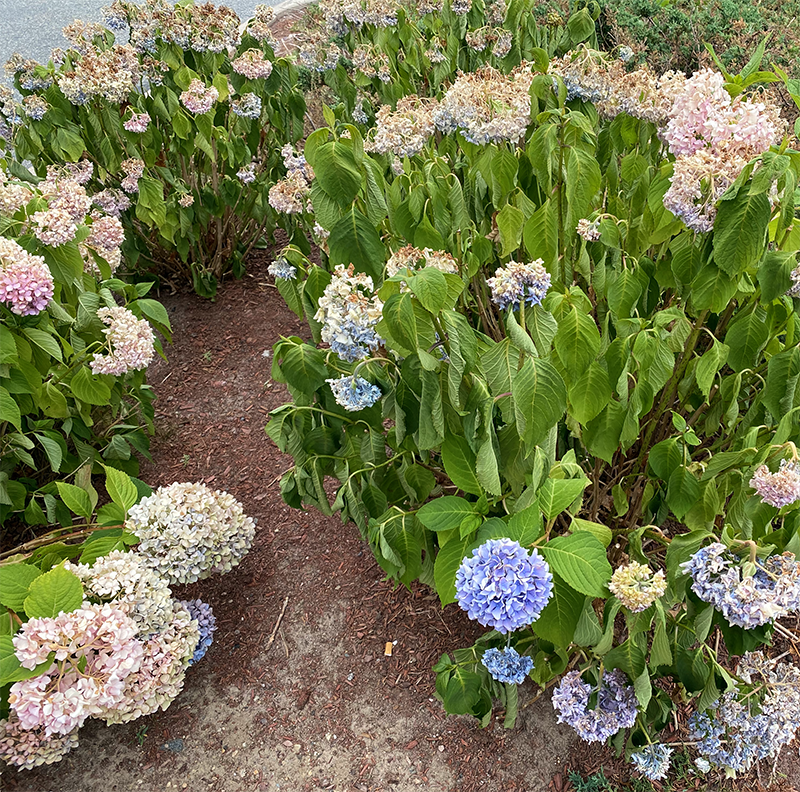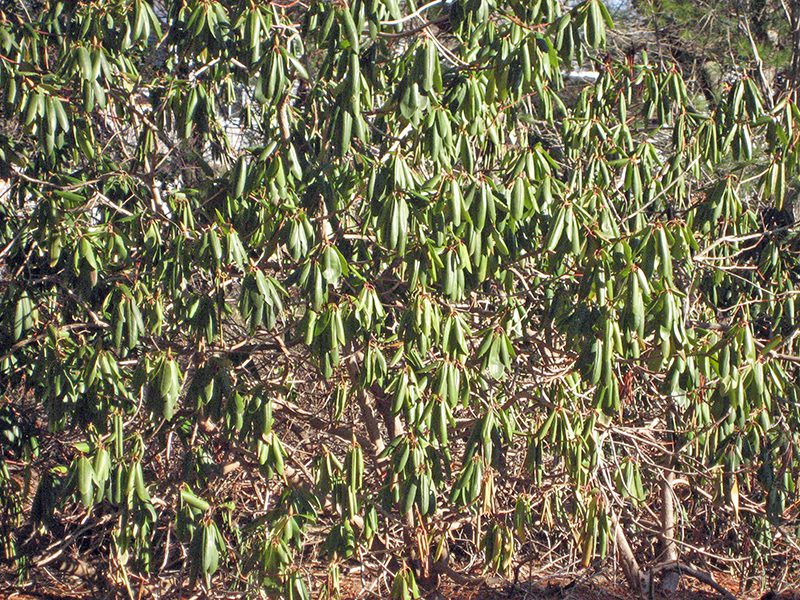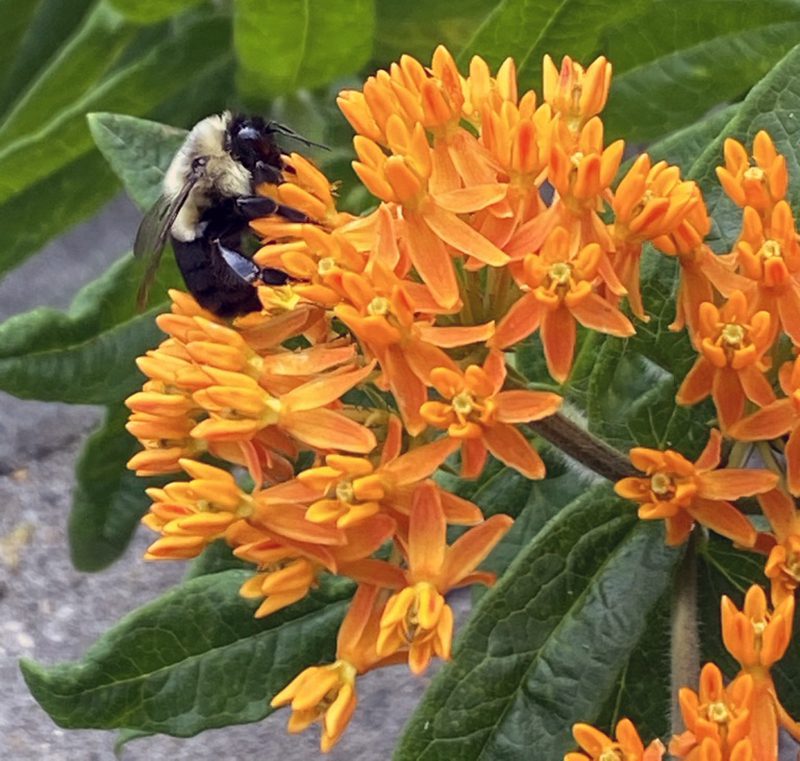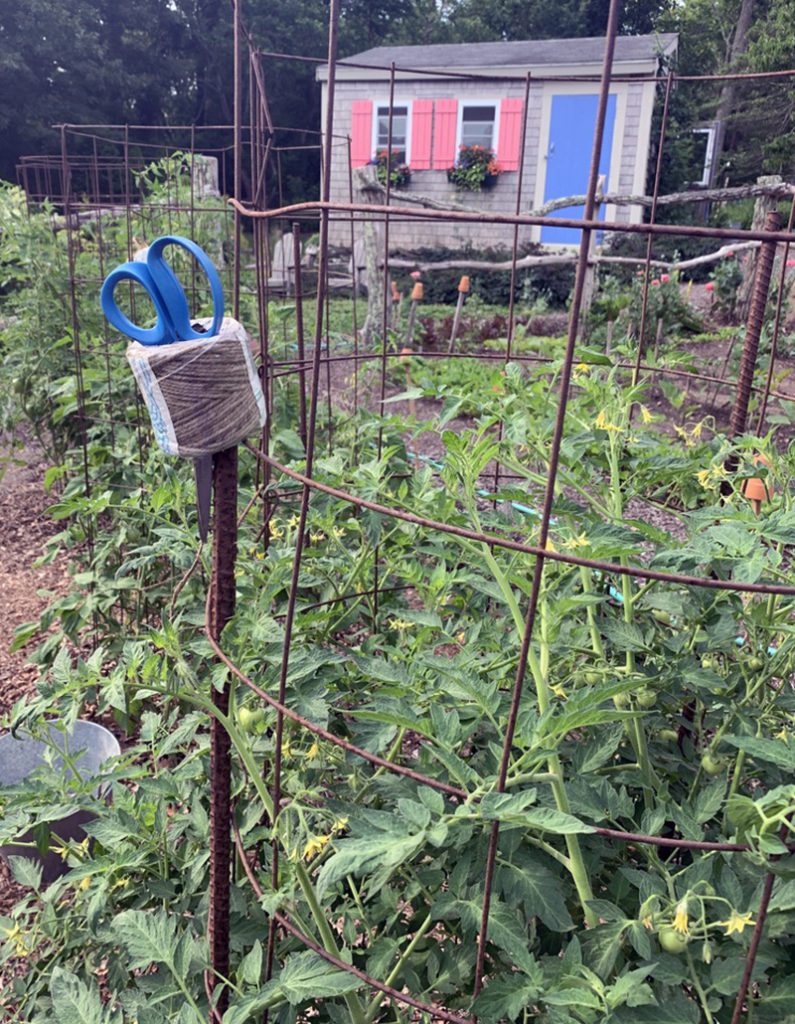Dry Gardens Q & A
Dry Gardens Q & A
It’s been a hot, dry summer on Cape Cod with, at this writing, no rain in sight. Even yards and gardens with irrigation systems are suffering, and our customers have many questions about how to take care of their drought-stressed plants.
My lawn is completely brown and crispy. Will it come back?
Grass plants are normally capable of going dormant in hot, summer weather, and then growing back from their roots and crowns when the cooler, wet weather returns in the fall. But if the plants get so dry that those roots and crowns shrivel and die, then there will be little recovery, even when rain returns. At this point you’ll need to wait and see, but it might be good to plan on raking in early September, top-dressing with compost, and putting down seed at that time. If you have other questions about lawn restoration in the fall, do come into the store to speak with Dekes or Nanette.
No matter how much I water my Hydrangeas, they wilt every afternoon and the flowers brown quickly. What can I do to help them?
In such hot weather, especially when it’s both sunny and windy, the large leaves and flowers on Hydrangeas lose water through their stomata. In plants, this water loss is called transpiration, and even if the soil is moist Hydrangeas can’t pull the water up fast enough to keep their leaves and flowers from wilting. If your plant recovers after sundown, that tells you that a lack of moisture in the soil isn’t the issue.
In general, the mopheads (Hydrangea macrophylla) and lacecaps (usually Hydrangea serrata) will do better if they are planted where they get early morning or very late afternoon sun, but are shaded during the hottest part of the day. So if your plants are in full sun, you might want to move them in September so that they’re in a more shady location.
If the soil around your plants isn’t mulched, putting down a layer of compost or bark mulch (or both!) can help hold moisture in the ground.

My Hydrangea flowers are all brown. Can I cut them off?
Yes, you can snip off browned flowers in order to make the shrub look better. Varieties that produce some flowers on new growth should start making some buds soon, so you’ll want to keep such plants from wilting so that these fresh blooms stay alive. Cut wilted and browned flowers just underneath the bloom.
Some of my shrubs have dropped leaves and look like they are dying. Should I fertilize or cut them back?
At this point it’s better to use a “wait and see what happens” approach to such shrubs. Some plants drop leaves in order to conserve water in their stems and roots. In such cases, the plants will usually come back next spring with new foliage and growth. Others may have partial die-back that will need to be cut off next spring, once you can clearly tell the extent of the damage. Right now, the best approach would be to water them if you’re able to do so, and decide about the pruning next spring.
This isn’t a good time to fertilize drought stressed plants. It’s a bit late in the season to apply an organic fertilizer, and a synthetic product should never be applied to a thirsty plant. Spreading compost or composted manure around your shrubs would be a better way to help them recover. Compost can be spread anytime, even around a stressed plant.

Many of my perennials that were growing near a stone patio have died. What can I put in this garden that won’t mind growing next to the hot stones in full sun?
There are several plants that thrive in such hot locations. Our native butterfly weed, which flowers in July, will do well in that location. Many of the sedums also thrive in hot locations, so look for Sedum ‘Autumn Joy’ or similar varieties. Finally, Lavender is very happy in sunny areas with reflected heat. So plant some Lavender on the edges of your patio and enjoy the plant and the aromatherapy that it provides.


My tomatoes are growing so tall…should I prune them back?
You’ll have more tomatoes if you’re able to support that tall growth instead of cutting them down. If your tomato has outgrown its support, you can add a taller stake or two next to it and tie it up. Some people even let those taller vines just drape over. These may break off if we get a storm, however, so the best approach is to tie up stems that are heavy with developing fruit.

1 Comment
Leave a Comment
Subscribe To Our Newsletter
Sign up for our weekly email about sales and events.

I’ve been showering my hydrangeas when they start to droop and it has been working.